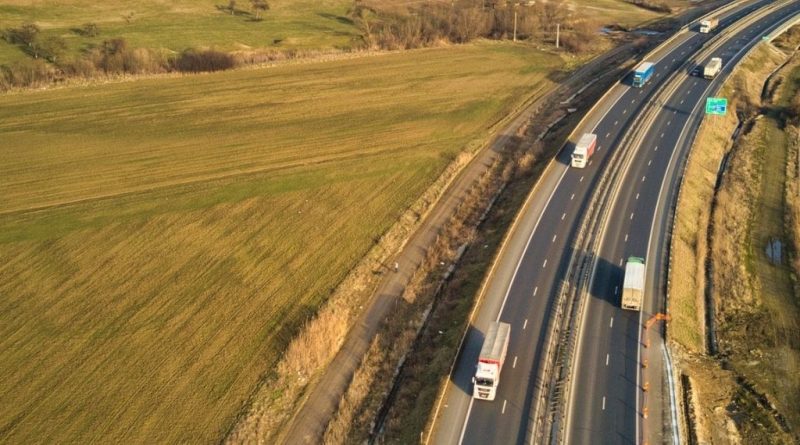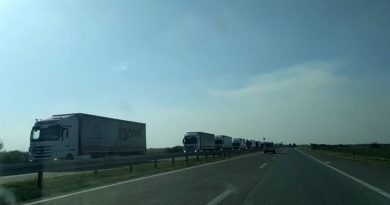European road freight rates soften after hitting another all-time high in Q3
Diesel prices, driver shortages and drought in Europe have all played a significant role to push average European road freight rates up again in Q3 despite lower consumer spending. However, data from the end of the quarter shows prices softening towards the end of Q3.
- Average European road freight contract rates up to an all-time high in Q3 2022 (129.7 index points), up by 5.4 points Q-o-Q and by 19.6 points Y-o-Y. In the spot market, rates hit 142.6 points, an increase of 6.0 points Q-o-Q and 26.4 points Y-o-Y.
- Rates on many European lanes are beginning to soften after this Q3 peak.
- Spot rates are now 12.9 points above contract in Europe. The gap was 12 points in the previous quarter and 6.1 points in Q3 2021.
- Diesel costs usually account for one third of the total operating transport costs, but given the increase, they may now account for 50% of costs.
- Driver shortage growth is expected to continue to increase until the end of 2022, with a 40% estimated increase in unfilled truck driver positions.
The European Road Freight Rates Benchmark Report, produced by Transport Intelligence, Upply and IRU, takes an in depth look at road freight rates across Europe on a quarterly basis. It explores the indicators and trends driving change – from fuel increases to global events – and provides an outlook for the road freight market to support the decisions of shippers, transport providers and hauliers.
Report highlights
Market adjusts to higher costs: This quarter’s smaller rate rises in both spot and contract signify that the market has adjusted to higher costs whilst higher production costs and lower consumer spending power have started to ease the upward demand-side pressure on rates.
Manufacturing contracts in Germany: Growing energy costs and uncertainties in energy supply are causing difficulties for the German industrial sector. This has pushed Germany’s manufacturing industry into decline with Germany’s manufacturing PMI falling to an average of 48.7 in Q3, a 5.1-point drop Q-o-Q. This puts Germany’s manufacturing sector firmly in contraction territory. This is the first clear sign that German industry will begin to demand less and less road freight as its factories demand fewer outputs and produce fewer intermediate and finished goods.
Manufacturing disruption in the UK: Forward delivery electricity prices in the UK are up over 500% Y-o-Y, with prices increasing 64.2% in August alone. The UK heads into winter in the most uncertain energy supply predicament in Europe. While the effects of this are uncertain, it is possible there will be interruptions to manufacturing in the UK over the winter, reducing road freight volumes.
Driver demand: Among main European countries (France, Spain, Germany, Romania, Poland and Denmark), between January and September 2022, the demand for drivers is continuously increasing (+44%). The shortage is forecasted to be far worse in 2026, with a multiplier effect of up to seven in the case of France.
Early harvests in Spain: Some areas of Spain have experienced their driest summer for over 1,200 years. Where grapes would usually be harvested in mid-September, many growers were forced to begin in August. This caused greater than usual demand for Spanish road freight in Q3 but will also result in less than usual demand in Q4.
River freight capacity reduced: Drought in Europe meant river freight capacity was reduced across the continent pushing demand onto road freight and adding more upward pressure to rates on some routes. High summer temperatures have also impacted the continent’s agricultural production, with many sectors expecting to see record-low harvest volumes.
Paris-Madrid route: All prices on the 1,270km journey between Paris and Madrid have reached a new all-time high in Q3-22. On the head haul from Madrid to Paris, contract rates are now at an average of EUR 1,570 per journey (EUR 1.24/km), this is up 2.7% Q-o-Q and 21.8% Y-o-Y.
Austrian lanes: Fuel surcharges meant contract rates saw the largest increase on Austrian lanes whilst the spot market was quick to price in the extra fuel costs. The average Q-o-Q increase on Austrian import lanes was more than twice the European average in both the spot and contract markets.
Germany-Poland: Spot rates are now 23.2% more expensive than contract from Duisburg to Warsaw, this is one of the largest differences in Europe.
Source: IRU






